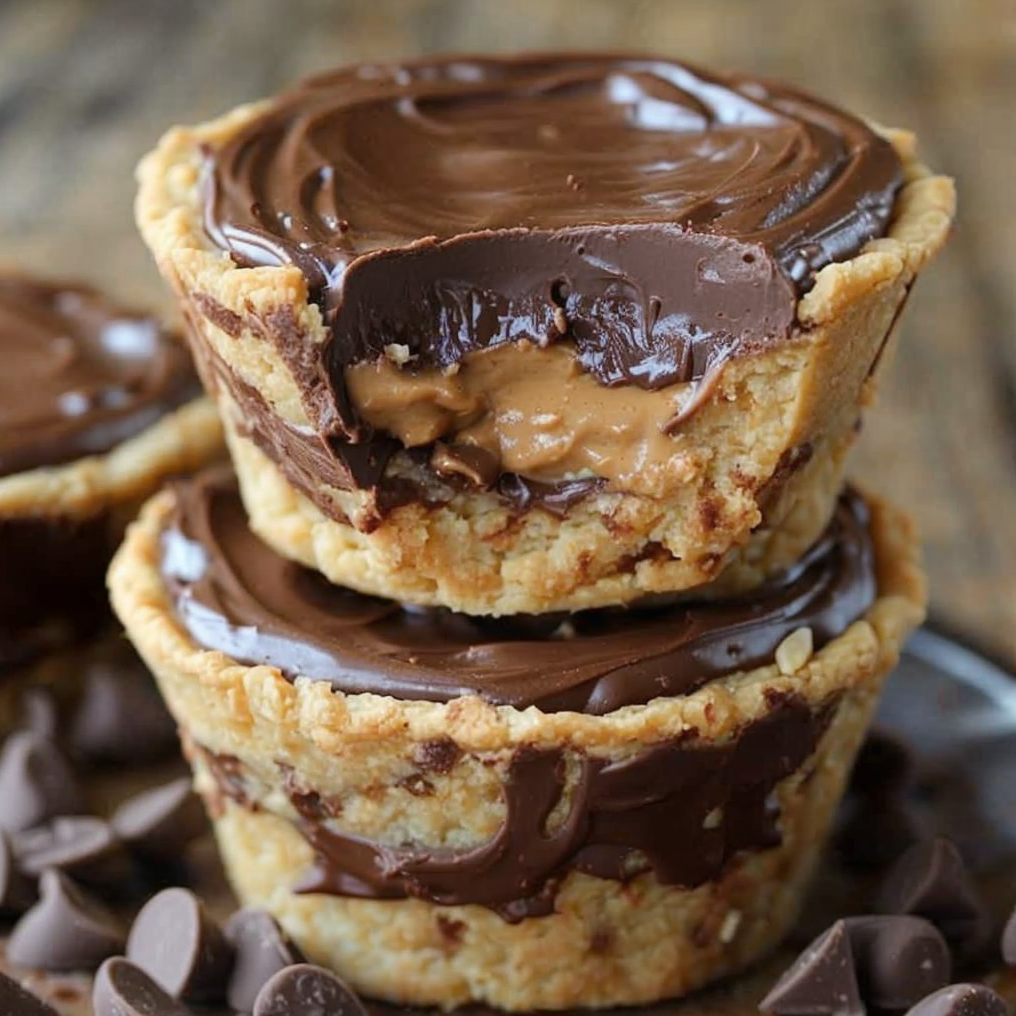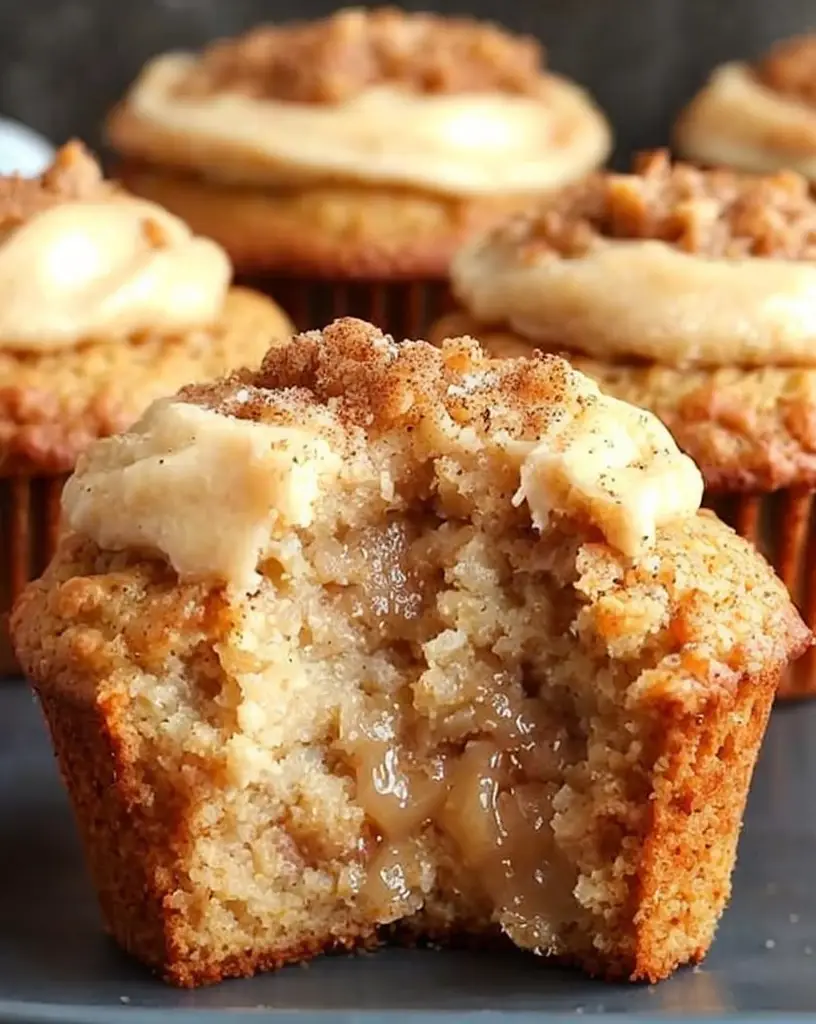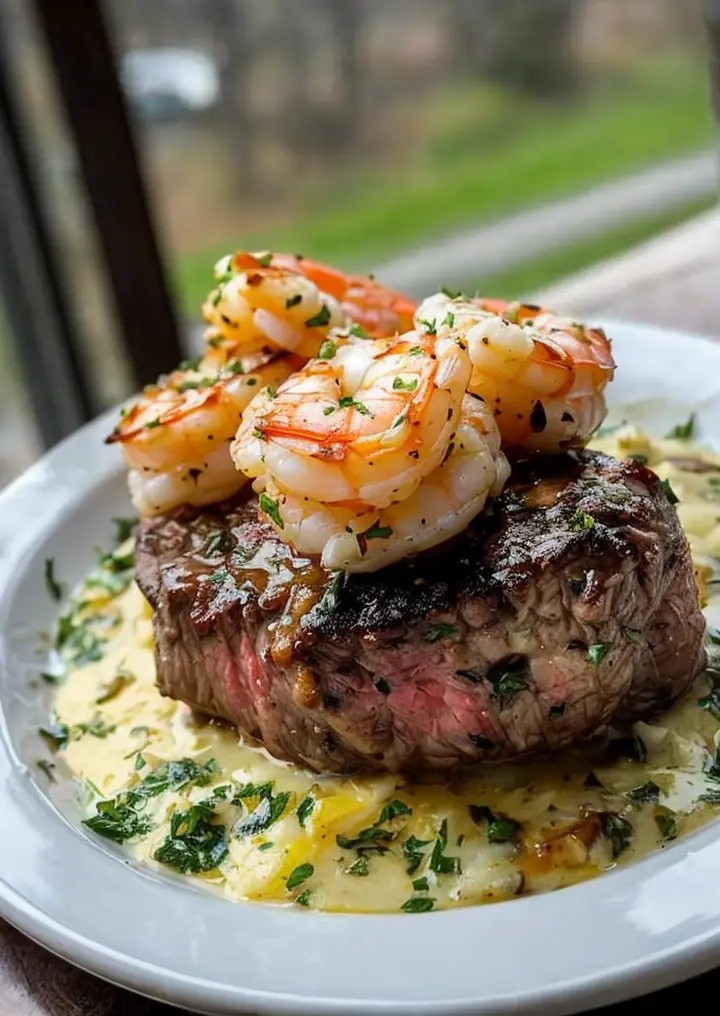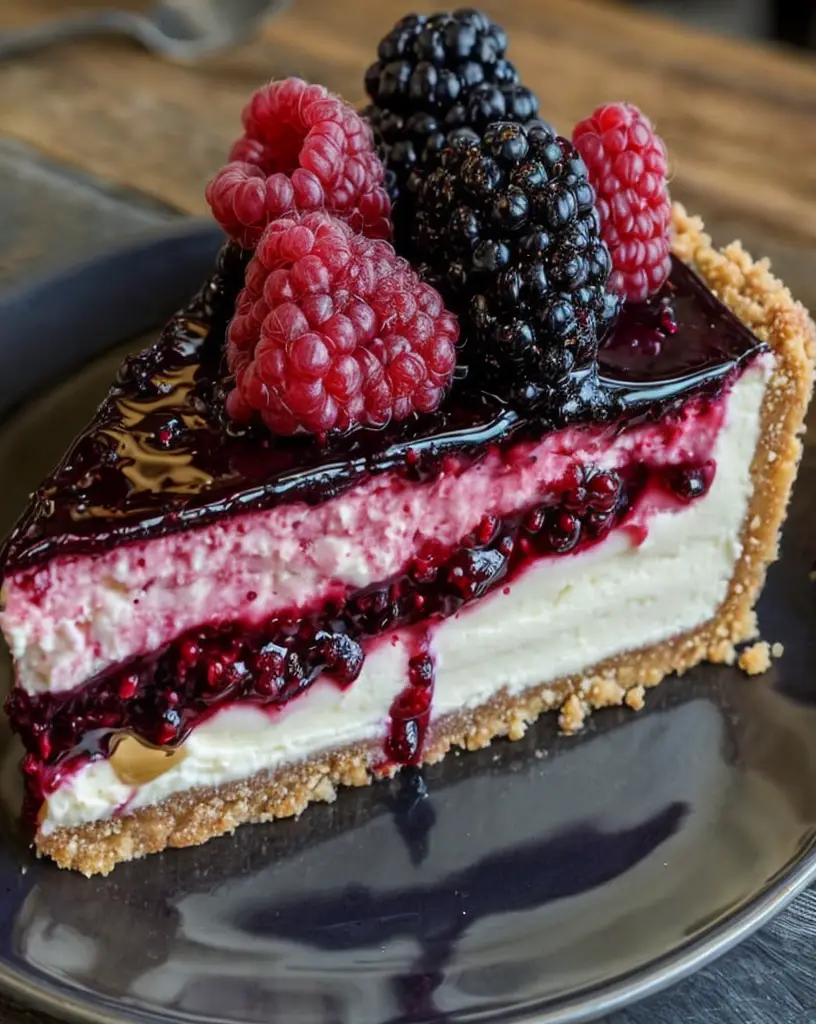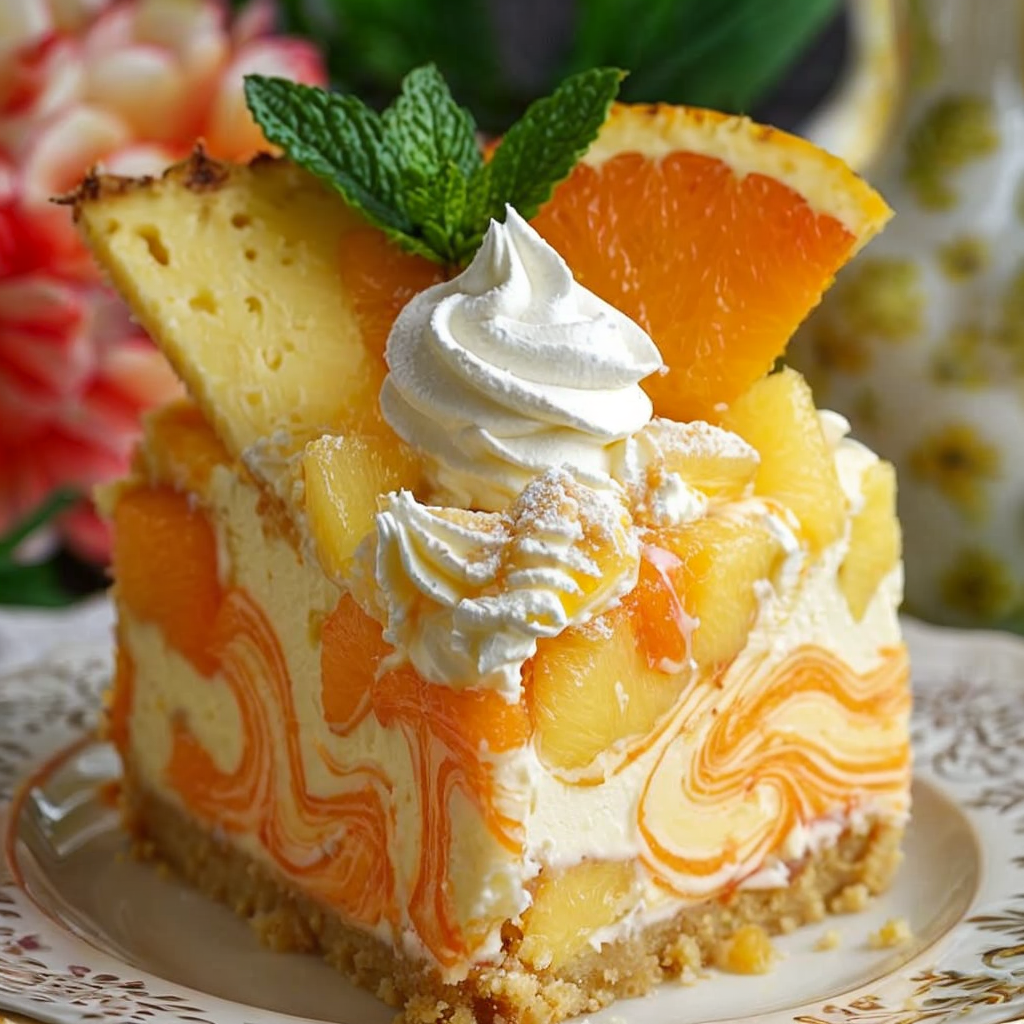Irresistible Mini Chocolate Peanut Butter Pies: Indulge in a Bite-Sized Delight
Chocolate and peanut butter is a classic combination that tantalizes taste buds and brings smiles all around. These Irresistible Mini Chocolate Peanut Butter Pies are not only delightful treats but also a perfect way to indulge your sweet tooth in a manageable portion. Each bite bursts with rich chocolate flavor complemented by a creamy peanut butter filling, making these pies an absolute favorite for parties, gatherings, or just a treat for yourself.
Picture this: you’re hosting friends for a dinner party, and you want to impress them with a unique dessert. These mini pies fit the bill perfectly—with their deliciously layered flavors and stunning presentation, they’re sure to be a talking point. Plus, the sweet aroma of chocolate paired with nutty peanut butter wafting through your kitchen is an experience you wouldn’t want to miss.
Quick Recipe Highlights
- Flavor Profile: Each mini pie is a delightful mix of sweet chocolate and creamy peanut butter, creating a flavor explosion.
- Texture: These pies feature a crispy chocolate crust, a smooth and creamy peanut butter filling, and a silky chocolate ganache topping.
- Aroma: The intoxicating smell of melting chocolate, combined with the nutty scent of peanut butter fills the air as you prepare the pies.
- Visual Appeal: Their charming, petite size makes them cute and photogenic, perfect for serving on a dessert platter.
- Skill Level Needed: This straightforward recipe is suitable for all skill levels, making it easy for anyone to recreate.
- Special Equipment: All you need is a muffin tin, a mixing bowl, and some measuring cups.
Recipe Overview
- Difficulty Level: With its simple steps and forgiving nature, this recipe is ideal for novices and experienced bakers alike.
- Category: This dessert falls under the ‘Sweet Treats’ category, perfect for satisfying any sugar cravings!
- Cuisine: These pies take inspiration from American desserts, with a rich history of combining chocolate and peanut butter.
- Cost: This recipe is budget-friendly, requiring easily accessible ingredients that cost around $10.
- Season: These little pies can be enjoyed year-round; however, they’re especially popular during holidays and parties.
- Occasion: Ideal for birthday celebrations, potlucks, BBQs, or as a special after-dinner treat.
Why You’ll Love This Recipe
- Taste and texture appeal: The combination of smooth and crunchy textures coupled with a rich flavor profile makes every bite of these mini pies an enjoyable experience.
- Convenience and preparation benefits: Quick to whip up and requiring minimal kitchen tools, you can have these ready in no time!
- Nutritional advantages: While indulgent, the peanut butter provides protein and healthy fats, making these pies a guilt-free treat—if enjoyed in moderation.
- Social and entertaining value: These mini dessert pies are easily shareable and are guaranteed to impress guests at any gathering.
- Cost-effectiveness and accessibility: With inexpensive and readily available ingredients, these mini treats will not break the bank.
Historical Background and Cultural Significance
- Origin story: Chocolate and peanut butter first exploded onto the dessert scene through candy bars, capturing hearts and inspiring countless recipes.
- Cultural importance: In American culture, this duo has become a beloved classic, shaping dessert menus and holiday tables.
- Evolution of the recipe: Over the years, the combination has evolved from simple candy bars to intricate desserts, including pies and cheesecakes.
- Regional variations: Mini chocolate peanut butter pies are enjoyed across the United States, with each region adding their unique twist.
Ingredient Deep Dive
- Chocolate: Essential in many desserts, chocolate’s rich flavor and antioxidant properties make it a beloved ingredient. Look for high-quality chocolate to ensure the best flavor and meltability. Store chocolate in a cool, dark place, and keep it away from moisture.
- Peanut Butter: With a history that dates back to ancient cultures, peanut butter is not only tasty but also packed with protein. Always opt for natural varieties without added sugars or oils for a healthier option. Store it in a cool part of your pantry, and consider refrigeration if the oil separates.
Common Mistakes to Avoid
- Using low-quality chocolate can result in a less flavorful pie. Always choose good quality chocolate for the best taste.
- Overmixing the peanut butter filling can lead to a less creamy texture. Mix just until smooth and combined.
- Not allowing the chocolate ganache to cool properly might result in it melting the peanut butter filling. Be patient!
- Skipping the refrigeration step can cause the pies to lose their shape; always chill them for the best results.
- Using the wrong sized muffin tin can alter the cooking time; ensure you use a standard muffin tin for this recipe.
- Not measuring ingredients accurately can lead to undesirable outcomes. Always double-check your measurements!
- Using creamy peanut butter instead of chunky can change the texture. Stick to what the recipe calls for unless you prefer a crunchy version.
- Serving the pies too warm can make them messy. Allow them to cool before serving for a better presentation.
Essential Techniques
- Melting chocolate: Crucial for achieving that silky ganache, melt chocolate carefully using a double boiler or microwave. Stir frequently to avoid burning.
- Mixing fillings: Combine peanut butter with cream cheese/sugar until smooth. This ensures a creamy texture that holds well in the crust.
Pro Tips for Perfect Mini Chocolate Peanut Butter Pies
- For a more intense chocolate flavor, consider adding cocoa powder to the crust.
- Incorporate a pinch of sea salt into the filling for a subtle flavor contrast.
- Use a food processor for a uniform and finely crushed crust.
- Decorate with crushed peanuts or mini chocolate chips on top for added texture and flavor.
- Experiment with flavored peanut butter (like chocolate or honey) for a unique twist.
- Allow the pies to set overnight in the refrigerator for enhanced flavors.
- Sprinkle flaky sea salt on top before serving to elevate the flavor profile.
- Use silicone muffin cups for easy removal without damaging the pies.
Variations and Adaptations
- Regional variations: Add spices like cinnamon or nutmeg to infuse additional warmth into the taste.
- Seasonal adaptations: Consider adding pumpkin or peppermint flavors for fall or winter holiday versions.
- Dietary modifications: Substitute ingredients for gluten-free or vegan alternatives, such as almond flour and plant-based butter.
- Flavor variations: Incorporate coffee or espresso powder for a mocha twist in flavor.
- Texture modifications: Add layers of whipped cream or a drizzle of caramel for texture contrast.
- Presentation alternatives: Use different molds or individual serving cups for an eye-catching presentation.
Serving and Presentation Guide
- Plating techniques: Arrange mini pies on a beautiful dessert platter, spacing them evenly.
- Garnishing ideas: Use fresh berries or additional crushed peanuts for a pop of color.
- Traditional accompaniments: Pair with whipped cream or vanilla ice cream for a classic complement.
- Modern serving suggestions: Serve with a scoop of gelato for a gourmet experience.
- Temperature considerations: These pies taste best chilled, so ensure they’re properly set before serving.
- Portion control tips: Each mini pie is perfectly sized, allowing guests to indulge without overdoing it.
Wine and Beverage Pairing
- Wine pairings: Pair these pies with a rich port or dessert wine that will complement the chocolate flavor.
- Non-alcoholic alternatives: Chocolate milk or iced coffee can provide refreshing options alongside the pies.
- Coffee/tea pairings: A dark roast coffee or a cup of chai tea balances the sweetness beautifully.
- Temperature considerations: Ensure any accompanying drinks are served alongside the pies to maintain the perfect experience.
- Serving suggestions: Offer drinks in chilled glasses for a refreshing contrast against the creamy pies.
Storage and Shelf Life
- Storage methods: Refrigerate in an airtight container to keep them fresh.
- Temperature requirements: Best stored below 40°F to preserve texture and flavor.
- Container recommendations: Use a shallow, wide container to avoid squishing the top of the pies.
- Signs of spoilage: Check for odd aromas or textures; discard if noticed.
- Reheating instructions: Best served cold; avoid reheating as it may ruin the texture.
- Freezing guidelines: These pies freeze well; wrap tightly and consume within a month for best results.
Make Ahead Strategies
- Prep timeline: Prepare the crust and filling a day in advance to save time on the day of serving.
- Storage between steps: Chill filling until ready to assemble for the best consistency.
- Quality impact assessment: Pies can be made ahead of time without sacrificing quality when properly stored.
- Assembly tips: Assemble just before serving for the freshest taste.
- Reheating guidelines: Serve chilled; if using frozen pies, thaw in the refrigerator overnight before serving.
- Fresh element additions: Add whipped cream or fresh fruit right before serving for that just-made freshness.
Scaling Instructions
- Halving the recipe: Simply divide all ingredients measurements by two, and adjust baking time accordingly!
- Doubling or tripling: Increase ingredients proportionally but be mindful of the muffin tin used.
- Equipment adjustments: Use additional pans to accommodate extra batter if doubling the recipe.
- Timing modifications: Keep an eye on the mini pies as they may bake faster or slower when scaled.
- Storage considerations: Ensure you have enough airtight containers if making multiple batches!
Nutritional Deep Dive
- Macro breakdown: Each mini pie contains a balance of carbohydrates, protein, and fats; perfect for energy without excess.
- Micronutrient analysis: Ingredients provide essential vitamins and minerals, making these treats more than just a dessert.
- Health benefits: The peanut butter adds protein, aiding in muscle recovery and satiety.
- Dietary considerations: Low glycemic index elements make these pies suitable for moderate consumption.
- Portion analysis: Each mini pie is portion-controlled, helping to manage calorie intake effectively.
- Weight management tips: Enjoy as a part of a balanced diet to satisfy cravings without overindulgence.
Dietary Adaptations
- Gluten-free: Substitute regular flour with almond or oat flour for a gluten-free option.
- Dairy-free: Use dairy-free cream cheese and coconut cream for the filling if avoiding dairy.
- Vegan: Opt for plant-based ingredients, ensuring all components are suitable for vegans.
- Low-carb: Replace traditional sugar with a low-carb sweetener for calorie-conscious individuals.
- Keto: Utilize almond flour and a sugar-free sweetener for a keto-friendly version.
- Paleo: Focus on natural ingredients like honey for sweetening and coconut oil for the crust.
- Low-FODMAP: Stick to low-FODMAP ingredients while maintaining flavor integrity.
- Other specific diets: Adjust recipes accordingly to ensure they meet the necessary dietary restrictions.
Troubleshooting Guide
- Texture issues: If the filling is runny, consider adding more cream cheese or letting it chill longer.
- Flavor balance: If overly sweet, a pinch of salt can enhance the overall flavor, balancing the sweetness.
- Temperature problems: If chocolate ganache doesn’t set, allow it to cool longer at room temperature.
- Equipment challenges: If using a non-stick muffin tin, run a buttered knife around the edges to release.
- Ingredient substitutions: Keep in mind that swapping ingredients may affect taste and texture; use caution.
- Timing concerns: Always check for doneness; if uncertain, a toothpick test is reliable in assessing cooked fillings.
Recipe Success Stories
- Community feedback: Many bakers report back with enthusiastic reviews, raving about how simple and delicious these mini pies are.
- Variation successes: Readers have found success in adding unique flavor variations, such as coconut or almond.
- Adaptation stories: Some have tailored the recipe to fit specific dietary needs while maintaining great taste.
- Reader suggestions: Feedback includes tips for adding spices or using different nuts for the crust.
- Photography tips: When sharing your own, natural lighting and clean backgrounds make these pies look even more tempting!
Frequently Asked Questions
Can I make these mini pies ahead of time?
Absolutely! These mini pies can be prepared a day or two in advance. Just make sure to keep them refrigerated for the best flavor and texture.
What type of chocolate is best for this recipe?
For the best flavor, use semi-sweet or dark chocolate. High-quality chocolate gives a richer taste and a smooth consistency.
Can I freeze these mini pies?
Yes! These pies freeze well. Just make sure to store them in an airtight container, and consume them within a month for the best quality.
What’s the best way to remove the mini pies from the tin?
Allow the pies to cool completely, then gently run a butter knife around the edges before removing them from the tin. Silicone muffin cups also work wonders for easy removal!
Is there a way to make this recipe healthier?
Indeed! You can substitute traditional sugar with natural sweeteners, use dark chocolate, and opt for healthier nut butter options.
Can I use a different nut butter?
Yes, feel free to use almond butter or cashew butter for a twist on the filling. Adjust sweetness accordingly, as some nut butters can be sweeter than others.
What can I serve with these pies?
They pair wonderfully with whipped cream, fresh fruits like strawberries, or a scoop of ice cream for an extra treat!
How long do these mini pies last?
When stored properly in the fridge, they can last up to a week. Make sure to keep them in an airtight container.
Can I make them without baking?
Yes! You can create no-bake versions by using a pre-made crust and chilling the filling before serving.
Are there gluten-free options available?
Absolutely! You can use gluten-free graham crackers or nuts for the crust to make these mini pies gluten-free.
What if I’m allergic to peanuts?
If you have a peanut allergy, you can substitute with sunflower seed butter or any other nut-free alternative.
Additional Resources
- Related recipes: Explore other chocolate desserts such as chocolate mousse or brownies for more indulgent options.
- Technique guides: Learn about the best chocolate melting techniques to enhance your baking skills.
- Ingredient information: Discover more about the health benefits of peanut butter and alternatives to diversify your cooking!
- Equipment recommendations: Invest in a quality muffin tin and a versatile set of measuring cups for seamless baking.
- Seasonal variations: Discover recipes that highlight seasonal fruits to incorporate in your mini pies for refreshing tastes!
Join the Conversation
We love to hear how your baking adventures turn out! Share your version of these Irresistible Mini Chocolate Peanut Butter Pies on social media using #MiniChocolatePeanutButterPies. Don’t forget to include your tips and tricks for customization!
Have a favorite variation? Drop a comment below, and let’s inspire others together! Your feedback and stories inspire us and others in the community.
The Recipe
Irresistible Mini Chocolate Peanut Butter Pies
Serves: 12 mini pies
Prep Time: 20 mins
Cook Time: 10 mins
Total Time: 30 mins
Kitchen Equipment Needed
- Standard muffin tin
- Mixing bowls
- Measuring cups and spoons
- Double boiler or microwave-safe bowl
- Rubber spatula
Ingredients
- 1 ½ cups chocolate crumbs (from crushed cookies or graham crackers)
- ½ cup melted butter
- 1 cup creamy peanut butter
- 8 oz cream cheese, softened
- ½ cup powdered sugar
- 1 cup chocolate chips
- ¼ cup heavy cream
Directions
- Preheat the oven to 350°F (175°C).
- In a mixing bowl, combine the chocolate crumbs and melted butter. Mix until all crumbs are coated.
- Press the crumb mixture into the bottom of each muffin tin cup, forming a crust. Bake for 10 minutes and let it cool.
- In another bowl, beat the peanut butter, softened cream cheese, and powdered sugar until smooth and creamy.
- Spoon the peanut butter mixture into each cooled crust, filling to the top.
- In a small saucepan, heat the heavy cream until just hot, then remove from heat and add chocolate chips. Stir until smooth to create the ganache.
- Pour the ganache over the peanut butter filling in each pie.
- Refrigerate for at least one hour until set before servings.
Recipe Notes
- For a gluten-free option, choose gluten-free cookies or graham crackers.
- Add a sprinkle of flaky sea salt on top for an extra flavor dimension.
- Feel free to substitute the chocolate ganache with whipped cream if you prefer a lighter topping.
